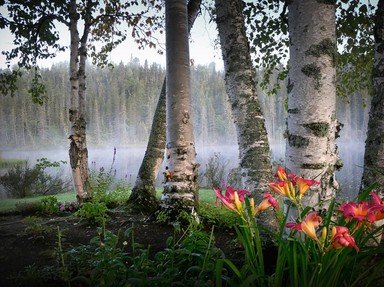Quiz Answer Key and Fun Facts
1. Smooth white bark with scars and trembling leaves
2. Distinctive bark which peels off in papyraceous layers
3. "Ghost trees" with bark resembling camouflage
4. "Powdery" tree endemic to Central Australia
5. Closely related to Aspens but with diamond patterned bark
6. Emblematic of Southern (US) culture
7. Monticello and Mount Vernon favorite with "alligator's back" bark
8. Recognized by its distinctive "strap-like" blooms
9. "Phantom of the Forest" created by mutation
10. Small clusters of white blooms with berries called haws
Source: Author
sally0malley
This quiz was reviewed by FunTrivia editor
rossian before going online.
Any errors found in FunTrivia content are routinely corrected through our feedback system.
